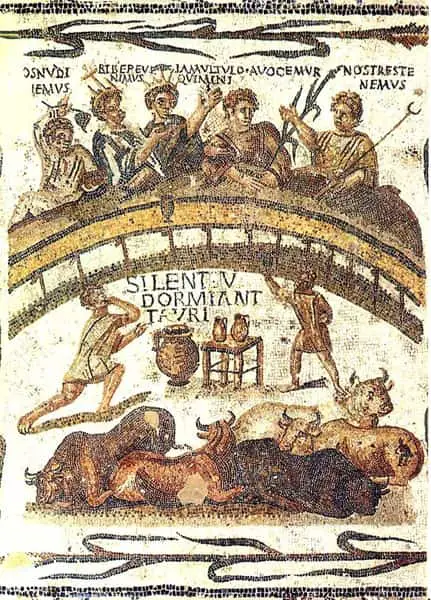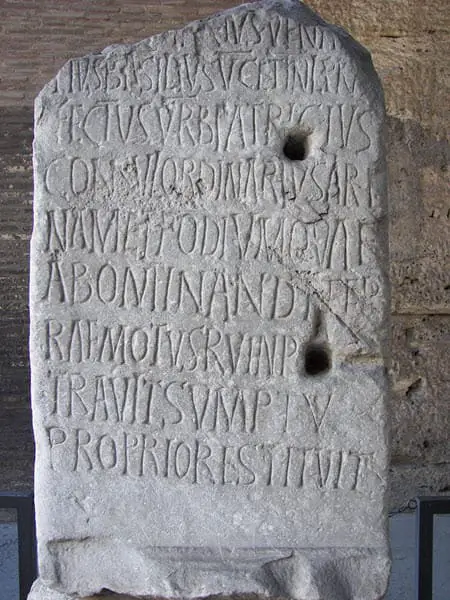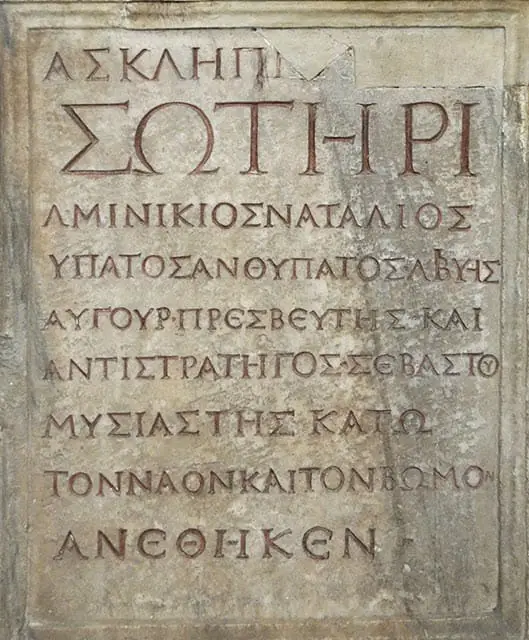The ancient Roman Empire consisted of millions of people belonging to numerous different groups, cities, and provinces. They all spoke other languages based on their locality. However, there were only two languages considered significant languages of the Roman Empire.

Source: Wikimedia Common
Latin and Greek were the major two languages understood and spoken by almost every citizen of Rome. In addition, however, every city and province had its local language; for instance, the citizen of Syria and Mesopotamia used Aramaic language, Antioch citizens used Syrian, especially the Christians, Carthaginians used Punic, Ancient Egyptian used Coptic, and Celtic was used by the citizen of Gaul including France, Belgium, Switzerland, and Northwest Italy.
These languages were also known as the regional language. The citizen of any city traveling around Rome had to learn either Latin or Greek while communicating with citizens of other cities.
These local and different languages were due to the seaport connecting Rome with other cities and empires. Traders and travelers came to Rome and traveled to other places for trade purposes; they would speak different languages.
Apart from trade and traveling purposes, various slaves were also brought into the Roman Empire with the victory over other cities and empires. In addition, the slaves would bring with them a unique language that that group would speak as a local language.
Despite differences in every regions’ language, every single citizen living in Rome would have to consider and take Latin and Greek as their principal language.
These two languages were used in almost every official works, including administrative work, legislative work, political issues, and governmental works. Even the literature and inscriptions in stone or clays would be done in either Latin or Greek language.
Now the languages have been descended from Latin to Spanish, Italian, and French. The Roman language is spoken by almost 700 million people all over, including America, Africa, and Europe. The Latin and Greek were added on by Spanish and French in later days.
Latin – One of the major languages of Ancient Rome
Content

Source: Wikimedia Common
Latin was the primary language used by citizens of Ancient Rome based on the Western Mediterranean region. It was known as Lingua Franca and was predominantly used by the people involved in areas of administration, politics, military, legislation, imperial or law, and literature.
The word ‘ Latin ‘ was derived from the word ‘ Latini’ that were the people settling in Rome ‘Latium’ around the 10th Century BC. This language became the official language spoken by the Romans until the 6th Century BC and continued to be the most used language in the military service until 630 BC.
Latin was the most potent weapon to be used during any wars or campaigns, as written inscriptions were the proper means of communication. Therefore, the plans and strategies made within the military troop of Rome used the project in paper with this same language.
The Latin language was further subdivided into three types – Old Latin, which originated during 75 BC; Classical Latin originated between 75 BC to 200 AD; and Vulgar Latin, between 200 AD and 900 AD.
The language primarily used in Ancient Rome was Vulgar Latin, and also the Roman language derived was from Vulgar Latin. However, there was no transparent difference between the letters of these three types, but the sound they produced while speaking was different.
It took its dominance over others between 200 BC and AD 100, when the Roman Empire extended its territory from the Iberian Peninsula to the western coast of the Black Sea. However, it was still in use even after the declination of the Roman Empire in the 5th Century.
Vulgar Latin, from the word, did not mean rude or foul language but rather told ‘ of the crowd, of the people, or the masses.’ Around 212 AD, the significant population of Rome lacked the knowledge of Latin but were required to at least get a basic understanding of this language
During the early discovery of this language, it was used only by the Emperor, his family, and his friends. Then, gradually, it became familiar to the government officials and lastly to the public.
Despite the popularity of this language, there were no proper means to transfer the written letters and notices to another city or Empire. As a solution, a properly graveled road was constructed only to transport letters of Roman Emperors.
Any citizen found to use this road to transfer letters would be punished. The only way to transfer was to request the person taking Emperor’s note to carry and deliver to the receiving person as a secret.
The letters were put in an oxen cart and were pulled to the destined location. Besides, Latin was also used in writing the Romanness, which was collecting political and cultural concepts that needed to be followed by the citizen.
The Latin language used Latin alphabets, which were derived from the Old Italic alphabet. The Old Italic alphabet was used by the Etruscans, which was derived from the alphabets used by the Cumae, and that too was derived from the Phoenician alphabet. So, the Latin letters used by the Romans was originated from the Phoenician alphabet.
The ancient Latin language emerged from the Latium region and from the Tiber River, which was the Roman Civilization’s origin.
The alphabet Y and Z were added during the Early Imperial Period around the 1st Century BC. The Romans used this language to have numerous Latin Literature surviving till today, including essays, poems, and even myths. The literature written in Latin was polished and stylish in a manner known as Golden Latin, which dated around the 1st Century AD.
Although Latin was spoken and written almost all over Rome, the grammar and vocabulary were different in every region. This language was first adopted by the educated people who had Greek Tutors.
These educated citizens would belong to the noble class and hire tutors amongst the Greek slaves enslaved during the conquest of Greece by the Romans. The slaves included professors, intellectuals, and noble people as well.
The Latin language then evolved independently in numerous local areas. The other empires, including Spain, France, and Portugal, also used this language and helped it spread all over different continents after the 15th Century. As a result, it is now spoken by almost two-thirds of Romans, even outside Europe.
Greek – second official language of Ancient Rome

Source: Wikimedia Common
Greek Koine of Hellenism was another official language majorly spoken in the Eastern province in the Byzantine Empire area. This part of the Roman Empire never replaced their language with Latin from the first time it was expressed in the 7th Century BC.
The language Greek was spoken in Rome before the 7th Century BC but was made official by Emperor Heraclius in the early 7th Century. And, also gained fame after the conquest of the Eastern Region by Alexander the Great.
Like Latin, Greek was spoken for diplomatic communication purposes and official use, inside and outside the border of the Roman Empire.
This language had helped Christianity to emerge and flourish in this region as it was used by the bishops and Christian leaders during their councils and as the language used in the New Testament in the Bible.
Apart from the Bible, this language was also used by Paul and the 4th Pope Clement to write the epistle( letters ) to the Romans and by Marcus Aurelius to write his meditations.
It is believed that Latin was used by the noble and higher class citizens while Greek was used by the lower level, especially the slaves. It happened after the conquest of Greece by the Romans.
However, during the dissolution of the Empire in the Western provinces, the Greek overtook the Roman Empire and made this language the dominant language in the Eastern Mediterranean. The repeal was between 376-476 C, where the Western Roman Empire failed to enforce its rule, and the whole of this territory was divided into numerous portions.
The language became popular in Rome after the conquest of Greece and its surrounding territories. Since then, it was spoken and studied as the language of cultivation, used in plays by Plautus, and spoken by Cicero.
Lucian believed Greek was the language of the dead in the underworld as well, and due to its popularity, it was spoken by the Romans of Greek Peninsulas and Islands. The speech began with the distinctive medieval Greek and rose to modern Greek eventually.
Despite the belief in using this language by the lower level, numerous Emperors, including Emperor Claudius, used Latin and Greek languages during his reign. He was the first Emperor to develop bilingualism even in communicating and administrative works.
Roman Alphabets

Source: Wikimedia Common
Roman Alphabet, also known as Latin Alphabets, were derived initially from Egyptian hieroglyphics. They have been extended and used in modern languages as well.
The initial Latin letters consisted of twenty-three letters, out of which twenty-one were derived from the Etruscan alphabet. The initial notes were modified and differentiated to make few more letters.
For instance, V was differentiated into V and U. In contrast, I was differentiated into J and I. So, with this differentiation, the original twenty-three letters have been turned into 26 modern English letters.
Though the exact date of the inscription of these letters is still unknown, the letters inscribed on a cloak pin dates 7th Century BC. “MANOS MED FHEFHAKED NUMASIOI” was signed on the Praeneste Fibula meaning “ Manius made me for Numbers.”
